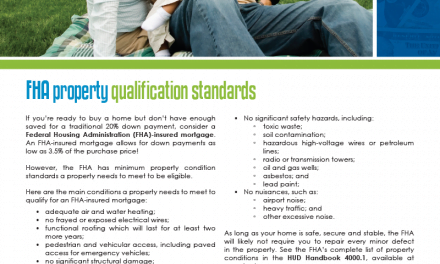Is a mortgage servicer required to offer a permanent mortgage modification to a HAMP homeowner who successfully completes a trial period plan? Read up on the recent case precedent which holds servicers’ feet to the fire.
Facts: A homeowner defaulted on their mortgage and a notice of default was recorded. The homeowner applied with the servicer of their mortgage for a loan modification under the Home Affordable Modification Program (HAMP).
The servicer and homeowner entered into a contract called a trial period plan (TPP). The TPP stated the homeowner will receive a permanent modification if they make trial modification payments and submit qualifying documents. The homeowner successfully made all TPP payments and submitted the required documents. The servicer then denied the homeowner a permanent loan modification. The servicer proceeded with foreclosure and sold the home at a trustee’s sale.
Claim: The homeowner sought to recover their money losses due to the trustee sale, claiming the servicer was obligated under HAMP to provide a permanent loan modification when the homeowner successfully complied with the terms of the TPP.
Counterclaim: The servicer claimed it complied with HAMP since it was only obligated to reevaluate the homeowner’s eligibility for a permanent modification when the homeowner successfully completed the TPP.
Holding: A California Court of Appeals held the homeowner is entitled to recover their money losses due to the foreclosure sale of their home since the servicer was obligated under HAMP to provide a permanent loan modification when the homeowner successfully fulfilled the terms of the TPP. [West v. JPMorgan Chase Bank, N.A. (2013) __ CA4th__]
A struggling HAMP marred by servicer misconduct
The federal Home Affordable Modification Program (HAMP) has performed poorly due to its structural flaws. This has resulted in HAMP’s failure to uniformly evaluate applicants and address negative equity. More recently, HAMP has appeared in a slew of cases in which servicers qualify homeowners for a trial HAMP modification only to complete foreclosure after the homeowner fully complies with the trial payments and documentation requirements.
What gives?
Despite HAMP’s flaws, if a homeowner decides HAMP loan modification with reduced payments and extended amortization is the best solution for their financial situation, they are entitled to an accurate evaluation of their HAMP application. Further, they are entitled to a permanent modification if they comply with the terms of the TPP contract they enter into with their servicer. As recent California cases have illustrated, the loopholes enabling a servicer to back out of providing a permanent modification for a qualified homeowner have been sealed shut by California courts. It’s about time.
What is HAMP?
In 2008, congress enacted the Emergency Economic Stabilization Act (EESA) in response to the Great Recession. The EESA included the Troubled Asset Relief Program (TARP) which charged the Secretary of the Treasury with developing a program to provide relief to struggling homeowners while offering incentives to the loan servicers of homeowner mortgages.
The Secretary designated $50 billion under HAMP to assist distressed homeowners avoid the loss of their home by foreclosure.
Homeowners who qualify for HAMP receive a permanent modification. HAMP’s strategy to prevent foreclosures is to reduce a homeowner’s monthly mortgage payment to 31% of their pre-tax, monthly income. [MHA Handbook v4.3]
HAMP eligibility
HAMP established a three step process to determine if a homeowner’s mortgage is eligible.
First, the mortgage is to meet threshold requirements:
- it is a first lien mortgage originated on or before January 1, 2009;
- it is secured by the borrower’s primary residence;
- monthly payments are greater than 31% of the borrower’s monthly income; and
- it has a current principal balance no more than $729,750 for a one-unit home.
For a complete list of threshold requirements and exceptions, see the HAMP Supplemental Directive 09-01.
Second, the servicer implements a waterfall method, going through a series of modification steps set out by HAMP until the borrower’s monthly mortgage payment is reduced to 31% of monthly pre-tax income.
The waterfall method includes:
- (Step 1) adding accrued interest to principle and eliminating late fees, if the homeowner qualifies for a permanent modification;
- (Step 2) reducing the interest rate to as low as 2%;
- (Step 3) extending the loan term up to 40 years; and
- (Step 4) deferring a portion of the principal interest free, until the final/balloon payment is due. [HAMP Supplemental Directive 09-01]
Third, after determining an appropriate modification using the waterfall method, the servicer conducts a Net Present Value (NPV) test.
The NPV test is a tool used to determine if a HAMP modified mortgage is to be of greater value to the servicer than the value of the mortgage unmodified.
If the NPV result is negative, foreclosure is more beneficial to the servicer and the servicer is not required to offer a modification. If the NPV result is positive, modifying the mortgage is more beneficial to the servicer and the servicer is required to offer the homeowner a trial period plan (TPP). [MHA Handbook v4.3]
Homeowners complete a trial period run
Once a homeowner is deemed eligible for HAMP, the servicer provides the homeowner with a TPP, a temporary, short-term modification. The TPP typically lasts three to four months and outlines a payment schedule for all monthly payments due during the TPP. The homeowner needs to successfully complete the TPP as a trial run to receive a permanent modification.
The servicer is not required to collect or evaluate documents to verify the homeowner’s information in order to qualify the homeowner for the TPP. Thus, verification documents are not required prior to entering into the TPP.
However, the homeowner is to submit verification documents to the servicer with the signed TPP to initiate the TPP.
To begin the TPP, the homeowner returns to the servicer:
- the signed TPP;
- a Hardship Affidavit;
- income verification documents; and
- the first month’s TPP payment to the servicer.
The servicer then uses the submitted homeowner documents to ensure all information the servicer used to determine the homeowner’s eligibility is accurate. If the servicer determines any of the information was inaccurate and the homeowner is not eligible, the servicer is required to immediately notify the homeowner they are not eligible for HAMP.
If the servicer determines the homeowner is eligible, the servicer immediately signs and sends the TPP to the homeowner.
The servicer then prepares the terms of a permanent modification in a Home Affordable Modification Agreement (HAMA) and sends it to the homeowner after receiving the homeowner’s second TPP payment. This affords enough time for the homeowner and servicer to execute the agreement by its effective date at completion of the TPP.
Upon successful completion of the TPP, the permanent modification goes into effect. [HAMP Supplemental Directive 09-01; MHA Handbook v4.3]
If the homeowner successfully completes the TPP and returns the signed HAMA to the servicer, the servicer is obligated to provide the permanent modification if the qualifying conditions remain unchanged during the TPP.
In recent HAMP cases, this is the disputed fact. Servicers contest they were not obligated to provide the permanent modification for a number of reasons, which are explored below.
Servicer participation in HAMP — incentives sweeten the deal
HAMP participation is mandatory for servicers of Government-sponsored enterprise-(GSE; i.e. Fannie Mae and Freddie Mac) owned or guaranteed mortgages and voluntary for servicers of non-GSE mortgages. [Making Home Affordable FAQ’s]
A substantial list of non-GSE servicers have agreed to participate and each sealed the deal with a Servicer Participation Agreement (SPA).
Related material:
Once a non-GSE servicer signs an SPA, it becomes obligated to identify homeowners who have or who are likely to default to evaluate them for HAMP eligibility. The SPA requires the servicer to modify the mortgages of eligible homeowners who complete a TPP and submit the proper documentation.
The servicer receives $1,000 and other incentives in exchange for each permanent modification the servicer enters into.
When a servicer signs an SPA, they agree to comply with all HAMP guidelines and procedures as well as all supplemental literature released by the Treasury. [Wigod v. Wells Fargo Bank, N.A (2012) 673 F3d 547]
Where servicers fall short
With HAMP participation, servicers:
- are only required to permanently modify a mortgage if it is in their best interest to do so; and
- receive monetary incentives for entering into permanent modifications.
What can go awry when the servicer’s bottom line is so revered under HAMP?
Servicers are being taken to court for refusing to offer permanent modifications after homeowners qualify for and comply with the requirements of the TPP.
The average suspect servicer is not versed in HAMP procedure and fails to create a sufficient infrastructure to manage HAMP applicants’ mortgages. As a result, the servicer makes careless mistakes which result in the improper denial of a homeowner’s application for a permanent modification. The end result is improper foreclosure.
Supplemental directives set the standards
Noncompliance with supplemental regulations is at the heart of recent HAMP cases. Here’s why: though servicers agree in the SPA to comply with all further HAMP instructions released by the Treasury, many servicers neglect to observe the Treasury Supplemental Directive 09-01 requiring servicers to offer a permanent modification to homeowners who comply with all conditions of the TPP.
If a servicer evaluates a homeowner as qualified before and immediately after issuing a TPP, the servicer has determined it is most beneficial for the servicer to modify the mortgage. Thus, a servicer’s refusal to provide a permanent modification on the homeowner’s successful completion of the TPP is either the result of:
- organizational hullabaloo; or
- the servicer’s failure to accurately evaluate the homeowner early in the TPP according to HAMP procedure.
For example, in West v. JPMorgan Chase Bank, N.A., the homeowner committed to a three month long TPP. The homeowner did not receive any communication from the servicer before the TPP concluded and continued making payments. After making an additional three payments, the servicer confirmed receipt of the homeowner’s verification documents and advised the homeowner to continue making the monthly payments.
Another three months later, the servicer notified the homeowner they were ineligible for HAMP. The servicer’s determination was based on an NPV test for which it improperly used outdated values.
The servicer promised to recalculate the NPV using correct values, but instead sold the homeowner’s home at a trustee’s sale two days later.
What went wrong?
First, the servicer did not verify the homeowner’s eligibility until six months after the TPP commenced. The servicer was to immediately determine the homeowner’s eligibility upon receipt of the homeowner’s verification documents and notify them of either determination.
Second, the servicer failed to execute verification of eligibility properly.
Third, the servicer failed to correct its error and foreclosed.
Ultimately, the servicer did not do what was required of it when the homeowner completed the TPP and submitted all documentation: offer a permanent modification.
Slimy servicers try to get off the hook
Once a homeowner catches a servicer’s sloppy work and sues, the servicer sets to work finding a loophole to avoid fault.
In several cases, the servicer claims it was not obligated to offer a permanent modification because, in the TPP, the servicer only promised to reevaluate the homeowner upon compliance with the TPP. However, because Supplemental Directive 09-01 requires the servicer to offer the permanent modification upon compliance with the TPP, the promise of permanent modification is implied in the TPP. [West v. JPMorgan Chase Bank, N.A. (2013) __ CA4th__; Wigod v. Wells Fargo Bank, N.A (2012) 673 F3d 547]
In one case, the servicer denied the homeowner a permanent modification because the homeowner did not have their signature notarized on a document, despite the document containing no instruction to obtain notarization. [Barroso v. Ocwen Loan Servicing (2012) 208 CA4th 1001]
The HAMA has also played a role in slimy servicers’ pursuit of innocence. For instance, a homeowner will fulfill all requirements, including returning the signed HAMA to the servicer. The servicer does not sign or return the HAMA to the homeowner, thus preventing the execution of the permanent modification. The servicer than cites their own failure to execute the HAMA as a valid reason for not offering a permanent modification to the homeowner. [Barroso v. Ocwen Loan Servicing (2012) 208 CA4th 1001; Corvello v. Wells Fargo Bank (9th Cir. 2013) __ F3d __]
This strategy, along with the others, has been rejected by California courts.
Related articles:
Agents: knowledge is power
Homeowners will continue to filter into HAMP until December 31, 2015, leaving plenty of time for servicers to improperly process more HAMP participants and shirk off responsibility.
Servicers are to heed the outcomes of these recent cases. Better management of homeowners’ mortgages, accurate and timely communication with homeowners, and compliance with HAMP procedures are necessary to ensure fair treatment of HAMP applicants.
If California servicers fail to improve, courts are prepared to hold them accountable. However, cornering homeowners into taking legal action is far from justice.
Agents best assist homeowners by informing them about the risks of HAMP before they apply. In addition to educating homeowners on HAMP as an imperfect solution and the prevalence of servicer misconduct, agents are to prepare homeowners for the rigorous application process.
Servicers are rigid and are ready to reject homeowner applicants over the slightest noncompliance. Agents are to warn homeowners to absorb all instructions and follow them to the T.
Timely payments are also crucial. The homeowner’s TPP payment is to be physically in the office to which it is due on the due date, not postmarked on the due date.
A HAMP applicant who has not defaulted, but is at risk of default, is wise to save the difference between the monthly payment amount of the original loan and the monthly payment amount of the reduced TPP, if possible. If the HAMP applicant is then denied the permanent modification – either properly or improperly – they will have the money on hand to bring their loan current.
Due to the complexities HAMP and frequent occurrences of servicer misconduct, an agent may choose to refer the homeowner to a Department of Housing and Urban Development (HUD)-approved counselor who can further assist them.
Bottom line: the real estate community needs to work together to educate homeowners and ensure responsible lending behavior.















My loan was a series of crimes by mortgage professionals at every step of the way.
Mortgage broker failed to disclose tha the loan he sold me and quoted payment were based on negative amortization. He was three weeks late in providing loan docs
Misconduct… lol. Over 8 years of systematic criminal acts are more than misconduct. These are intentional acts to help cover up other crimes. Many are denied because the bank knows it doesn’t own the loan. They rush foreclosure to hide the crime.
What are you saying?
Question…. Received permanent loan modification papers 1-26-2015, with an effective date of 1-1-2015. Signed them in front of notary 1-28-2015 fed ex overnight, have confirmation they were received at 10:07 am the 29th. First new mod pmt due 2-1-2015 do I make the new payment or my trial payment amount??? I called they said they had been dinged but I don’t have a signed copy and they say that could take 30 days. Is this a trick on their part?
Misconduct?? I’m seeing gross misrepresentation and fraud by loan servicers.